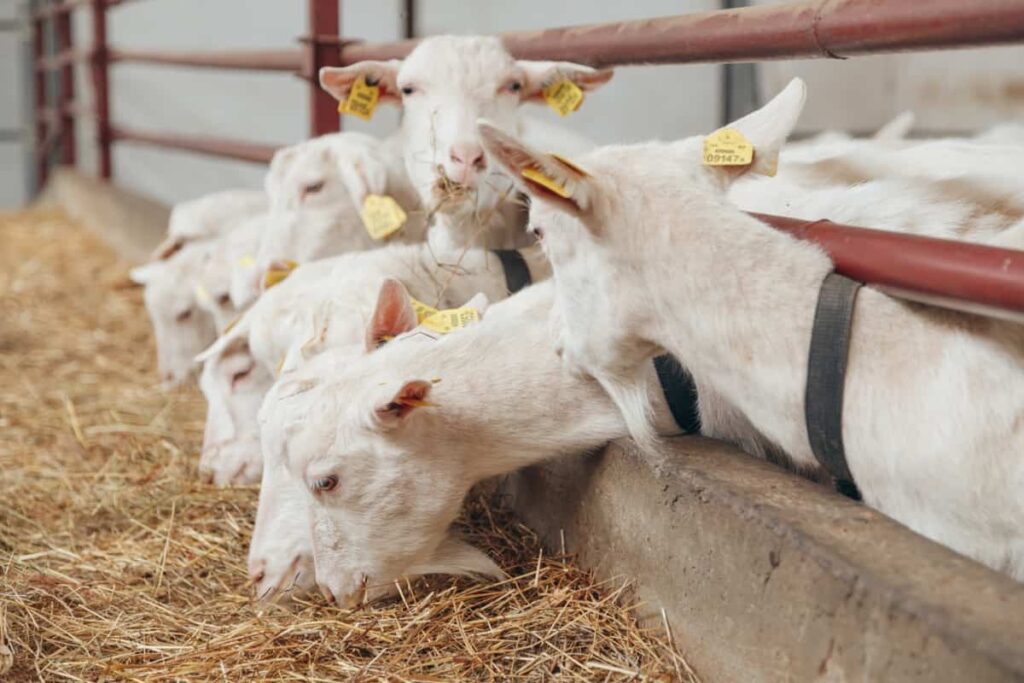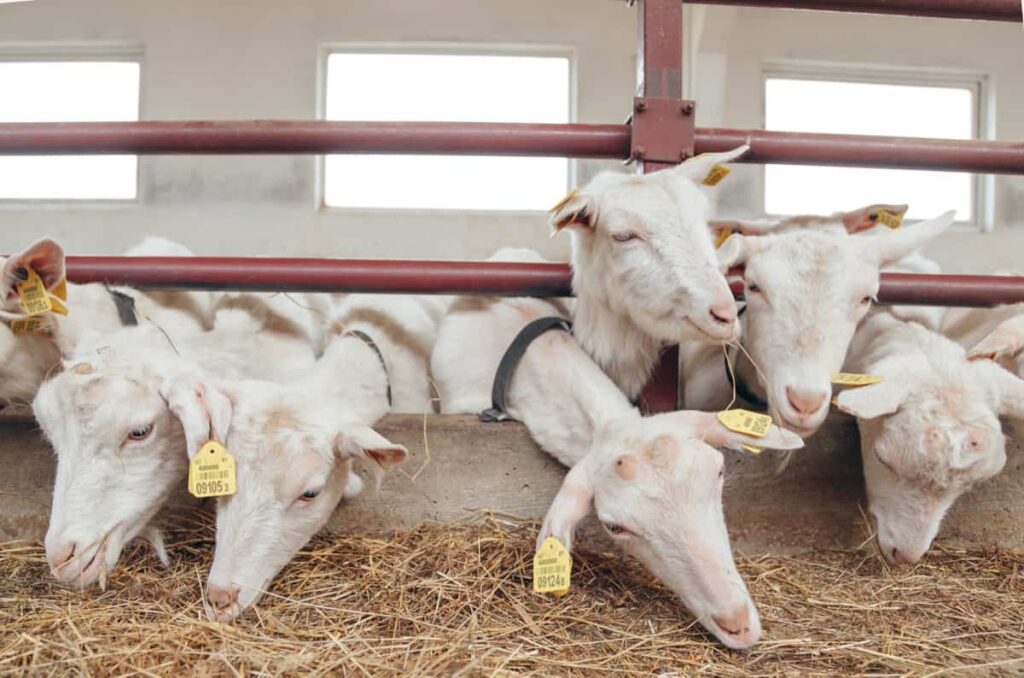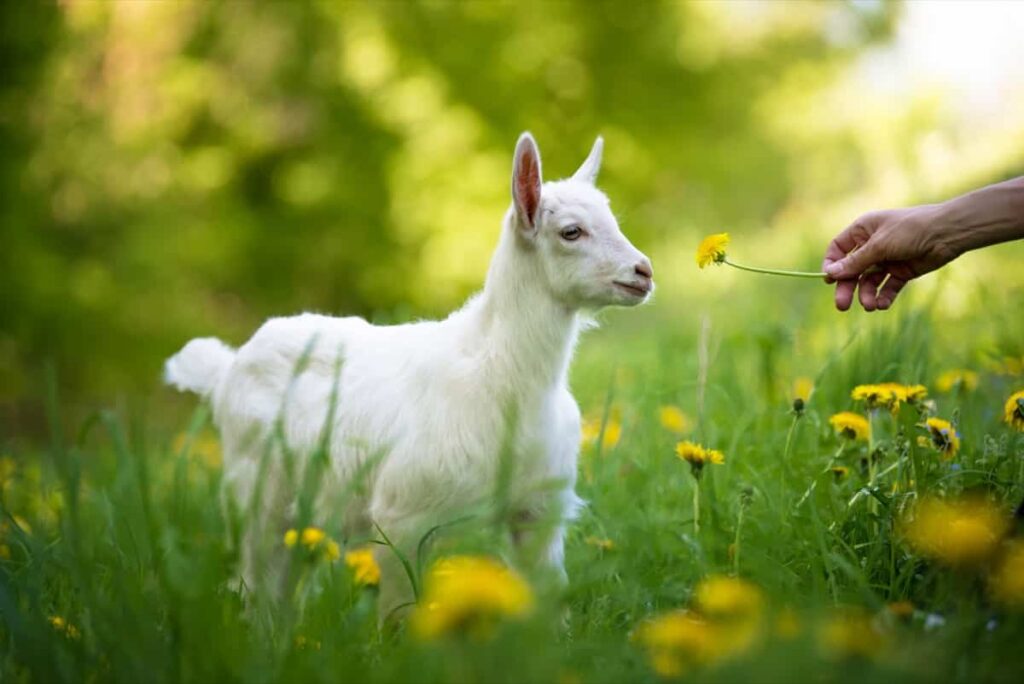The Appenzell goat breed is a Swiss domestic goat breed that is known for its unique physical features, friendly personality, and useful role in agriculture. In this post, we’ll explore the history of the Appenzell goat, its physical traits, and its personality characteristics. Additionally, we’ll discuss some interesting facts about this breed and provide insight into how to care for them.

Getting to Know the Appenzell Goat
History of the Appenzell Goat
- The Appenzeller goat breed comes from Appenzell Ausserrhoden and Appenzell Innerrhoden.
- A goat breeders’ association was established in Innerrhoden in 1902 and another in Ausserrhoden in 1914.
- The Swiss Federation of Cantonal Goat Breeders’ Associations operates a conservation and reintroduction program for the breed.
- The breed was listed as “endangered-maintained” by the FAO in 2007.
- The Appenzeller was cross-bred with the Saanen in the 1920s to create the Zürcher Ziege.
- Additionally, the Appenzeller contributed to the evolution of the Toggenburg breed.
Physical Characteristics of the Appenzell Goat
- The Appenzell Goat is a medium-sized breed that is usually completely white.
- Their coat is medium-long to long.
- The breed is usually polled, but horned animals are also accepted.
- Appenzell Goats are primarily used for milk production and vegetation management.
- On average, the breed produces just over 800 kg of milk annually.
- The male Appenzell Goat weighs around 65 kg, while the female weighs around 45 kg.
- The height of the male Appenzell Goat is around 80 cm, while the female stands at around 75 cm.
- The breed is usually completely white, with the wool and face being white.
- Appenzell Goats are known for their hardiness and adaptability to harsh climates and terrain.
Uses of Appenzell Goats
- The Appenzell Goat is primarily used for milk production and vegetation management.
- They are known for producing high-quality milk that is used for cheese production.
- Appenzell Goats are well-suited for grazing in rough terrain and can effectively control weeds and brush.
- The breed is also kept for ornamental purposes due to its attractive appearance and hardiness.
- Appenzell Goats are used in conservation efforts to maintain and protect the breed from extinction.
Shelter and Fencing Requirements for Appenzell Goat
- Shelter: Appenzell Goats require a dry, draft-free shelter to protect them from harsh weather conditions. The shelter should be well-ventilated and have enough space for all goats to rest and move around comfortably.
- Fencing: Appenzell Goats are agile and good climbers, so fencing needs to be sturdy and secure. The fencing should be 4 feet high, with additional electric wires or netting to prevent climbing or jumping over the fence.
- Grazing Area: Appenzell Goats require plenty of space to graze and forage. A minimum of 250 square feet of grazing area per goat is recommended.
- Feeding Area: Appenzell Goats also need a designated feeding area that is clean and protected from rain and snow.
- Water: Access to clean, fresh water is essential for the health and well-being of Appenzell Goats. A water source should be always easily accessible and available.
In case you missed it: Goat Breeding and Genetics for Improved Productivity and Disease Resistance

Feeding and Nutrition for Appenzell Goat
- Diet: Appenzell Goats are ruminants and require a diet that is high in fiber. Their diet should include hay, fresh forage, and a balanced grain mix. The ratio of hay to grain should be at least 70:30.
- Water: Access to clean, fresh water is essential for the health and well-being of Appenzell Goats. Water should be available at all times.
- Mineral Supplements: Appenzell Goats require a balanced mineral supplement that includes calcium, phosphorus, and salt. Free-choice mineral blocks or loose minerals should be available at all times.
- Protein: Protein is important for muscle development and milk production in Appenzell Goats. A balanced grain mix with protein-rich sources such as soybean meal or alfalfa pellets can help meet their protein requirements.
- Feeding Schedule: Appenzell Goats should be fed at regular intervals throughout the day, and their diet should be adjusted based on their age, weight, and nutritional requirements.
Grooming and Health Care for Appenzell Goat
- Grooming: Appenzell Goats have a medium-long to the long hair coat, which needs to be brushed regularly to prevent matting and tangling. They also require regular hoof trimming to prevent overgrowth and infection.
- Health Care: Appenzell Goats should receive regular vaccinations and deworming to prevent diseases and parasites. It’s important to have a veterinarian regularly check their health and performs necessary treatments.
- Diet: Appenzell Goats require a balanced diet of hay, fresh pasture, and grain. Their diet should be monitored to ensure they are receiving proper nutrition.
- Exercise: Appenzell Goats need regular exercise to maintain good health and prevent obesity. They enjoy climbing and playing, so providing them with opportunities will keep them active and happy.
- Health Issues: Appenzell Goats are generally healthy but may be susceptible to common goat ailments such as parasites, mastitis, and respiratory infections. Early detection and treatment of these issues are important for their health and well-being.
Breeding and Reproduction for Appenzell Goat
- Breeding Season: The breeding season for Appenzell Goats typically occurs from August to December.
- Mating: Goats can mate naturally, or artificial insemination can be used for selective breeding. Buck goats should be separated from the does when not breeding to prevent unwanted breeding.
- Gestation: The gestation period for Appenzell Goats is about 150 days.
- Kidding: Appenzell Goats typically have 1-3 kids per litter, with kidding occurring from March to June. Does should be provided with a clean, dry, and warm place to give birth.
- Care for kids: Appenzell kids should receive colostrum and be bottle-fed if necessary. They should be kept warm, dry, and protected from predators.
- Selective Breeding: It can help to improve the genetics and overall health of the Appenzell breed.
Facts Related to Swiss Goats
- Popular Swiss goat breeds include Saanen, Toggenburg, and Chamois Coloured mountain goats.
- Saanen is the largest breed of milk goats raised in Switzerland.
- Toggenburg is a dairy goat breed originating in the Toggenburg valley of Switzerland.
- Boer, Tennessee, Spanish, Rangeland, and Kiko goats are considered the tastiest goat breeds for meat.
- Nubian and Pygmy goats are good choices for beginners. Other good choices include Nigerian Dwarf, LaManchas, Alpines, Saanens, Boers, and Kikos, based on their hardiness and primary goal for raising goats, such as meat or dairy.
- Saanen is the most profitable dairy goat breed, with a potential profit of up to $36 per day from selling their milk.
In case you missed it: Innovative Housing and Shelter Designs for Profitable Goat Farming

Conclusion
The Appenzell Goat is a rare and endangered Swiss breed known for its white coat, medium size, and high milk production. It has a rich history in the Appenzell region and is used for milk and vegetation management. Careful breeding and reproduction are important for its conservation.
- Types of Grass Growing for Goat Farm
- How to Train Goats for Milking: A Beginners Guide
- Goat Milking Practices and Equipment: A Beginner’s Guide
- Goat Farming for Fiber: Producing Mohair and Cashmere
- Maximizing Goat Milk Production: Tips for Dairy Goat Farmers
- Goat Farming as a Family Business: Strategies for Success
- Profitable Kenya Goat Breeds for Commercial Dairy and Meat Business
- Unlock the Secrets of Oberhasli Goat: Discover Raising and Management Practices
- Ultimate Guide to Myotonic Goats: Explore Profile to Raising